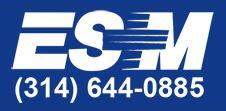Carpal Tunnel Surgery Recovery
The most common repetitive work injury is Carpal Tunnel Syndrome. Esquire has initiated protocols that have successfully treated this problem.

Carpal Tunnel Syndrome is a painful injury to the wrist that can interfere and cause pain, tingling, and numbness in the hand, wrist, and fingers. Esquire Orthopedic Rehabilitation and Sports Medicine have seen a marked increase in the number of our patients who are diagnosed with this painful condition. This can be attributed to the growing use of computer technology in the workplace and the amount of time spent on a keyboard.
Dr. Droege can treat Carpal Tunnel Syndrome with a series of therapies that reduce pain and swelling and increase mobility. If allowed to advance too far, a patient may have to resort to surgical methods.
What is important to understand is that if postoperative therapy is not administered after Carpal Tunnel Syndrome surgery, the symptoms are likely to reappear. To avoid this, call Doctor Droege after your surgery to begin a therapy plan that promotes healing which can prevent the painful recurrence.
How does carpal tunnel surgery recovery work?
Your hand and wrist will be swollen and weak after a Carpal Tunnel Syndrome surgery. By embarking on pain-relieving therapy immediately, you can reduce that swelling faster and restore mobility to the wrist and hand. Regaining strength is one of the most important components necessary for a return to normal activities.
Reducing the swelling of soft tissue caused by the surgery is done first, cold laser therapy or ultrasound therapy may be used. These therapies penetrate deep into the soft tissue and help reduce inflammation and increase circulation.
With exercise therapy, our trained staff starts with a light regimen of finger exercises that get mobility back to the hand and wrist. Every patient responds differently and requires custom flexibility and strength programs.
